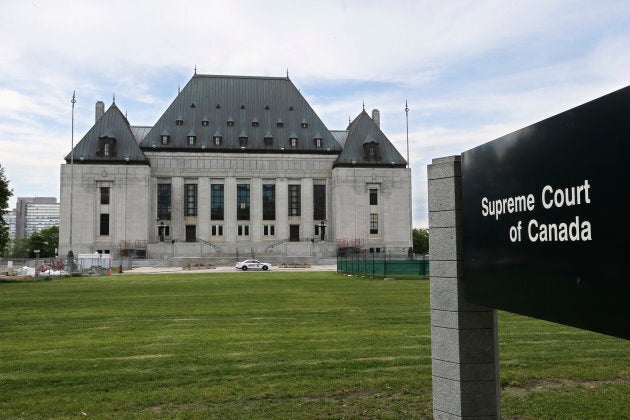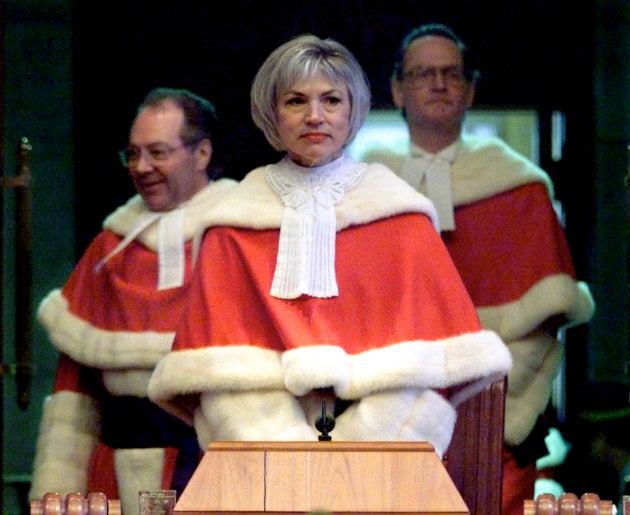Only white people have ever sat on the Supreme Court of Canada. Some believe it is high time this should change, while others continue to defend the idea of "merit" as the basis for appointments, evidently finding nothing suspicious about an ostensibly meritocratic system in which only white people rise to the highest positions. The fact is the homogeneity of the lily-white court is a severe weakness and has the practical effect of ensuring a white and privileged worldview remains ascendant in Canadian law.
In the landmark case R. v Grant, the Court admitted a handgun found on a young black man as evidence following an illegal detention and search by Toronto police. The court, applying s. 24 of the Charter of Rights and Freedoms, held that to exclude such evidence would "bring the administration of justice into disrepute." This decision seems reasonable from a white, privileged perspective. Illegal handguns are a menace, the breach of Mr. Grant's rights was relatively minor, and he was a gun-toting criminal in any case. Never having experienced racial profiling, the all-white justices found public safety to be more important than the rights of one black man.

What the justices failed to consider is the effect their decision would have on black and other minority communities. Essentially the Grant decision sanctified "carding," illegal detention, and police harassment of people of colour. Police need only ensure they discover significant evidence which outweighs "minor" Charter breaches. The Supreme Court casually ignored the foreseeable consequences of their decision: the continued intimidation and illegal searching of thousands of innocent people of colour throughout the country. For every handgun that police discover, hundreds of non-white citizens are humiliated and degraded by the police forces sworn to protect them. For example, journalist and activist Desmond Cole says he has been stopped and questioned more than 50 times by Toronto Police without cause. Law-abiding minority citizens face repeated "minor" breaches of their rights and dignity, while the state-sanctioned discrimination they endure never reaches the white and privileged consciousness Canada's highest court. This pervasive, systemic bias is why, among segments of the Canadian population, the administration of justice has always been viewed with contempt and suspicion.
In the case of Hill v Hamilton-Wentworth Police, an Indigenous man sued the police after he was falsely convicted and imprisoned for a series of thefts due to police negligence. While the Court agreed police negligence had caused his imprisonment and found for the first time that police owed a "duty of care" to suspects, they found in favour of the police. They argued the series of negligent police actions did not breach the standard of care police owe to suspects, in part because "At that time (1995), awareness of the danger of wrongful convictions was less acute than it is today."
It is hard to imagine such a naïve statement passing unchallenged, except among a group of privileged white people whose experience with the justice system has been uniformly positive. Indigenous Canadians have been acutely aware of the danger of wrongful convictions by the Canadian legal system for centuries, and every vulnerable Canadian would benefit from the wisdom of an Indigenous Justice who could speak to that reality.

In the Provincial Electoral Boundaries Reference (Sask) case, Justice Beverley McLachlin upheld the legality of awarding proportionally more voting power to rural and sparsely populated ridings, writing "problems of representing vast, sparsely populated territories, for example, may dictate somewhat lower voter populations in these districts." This is a reasonable point and likely informed by Justice McLachlin's childhood experience growing up on a farm in Pincher Creek, Alberta. However, the effect of this decision was to approve the practice of granting more voting power to rural Canadians. As rural voters are disproportionately white, and a disproportionate share of urban voters are visible minorities, the result is that the average white Canadian's vote counts for more than that of the average Canadian person of colour.
Justice McLachlin was not wrong to defend the interests of rural Canadians, but, on a truly balanced court, a visible minority raised in an overpopulated riding could have spoken to the difficulty of representing a district inhabited by dozens of nationalities and cultures, struggling with high poverty and crime rates, and requiring many services. Citizens of these ridings also deserve a voice before the justice system dilutes their voting power.
Few would suggest we return to the days before women or Jews were appointed to the Court. Efforts are made to ensure the Court has a full breadth of legal expertise and experience, ranging from Justice Abella's in-depth knowledge of human rights law to Justice Cote's extensive understanding of business and commercial law principles to Justice Rowe's experience as a constitutional lawyer. Regional considerations also play a role as Quebec is guaranteed three justices and convention dictates how many justices each region deserves. Gender balance is also a well-established goal.
For the Supreme Court to become truly representative and legitimate for the first time in its history, at least two of those appointments must be people of colour, one of whom ought to be Indigenous.
This principle of balance and diversity should be extended with respect to justice for the 23 per cent of the Canadian population that is not white. Asked about the current composition of Canada's highest court, famed human rights lawyer and law professor, Peter Rosenthal said, "The Supreme Court of Canada was created less than ten years after Confederation. It is astonishing that, in all the time since then, every justice of the court has been Caucasian. When will Indigenous peoples and members of visible minorities finally see someone of their heritage appointed to the highest court in our land?"
Three Supreme Court Justices will reach mandatory retirement age in the next five years. For the Supreme Court to become truly representative and legitimate for the first time in its history, at least two of those appointments must be people of colour, one of whom ought to be Indigenous. Anything less will likely mean Canadians can expect to suffer decades more privileged, white "justice."
Also On HuffPost: